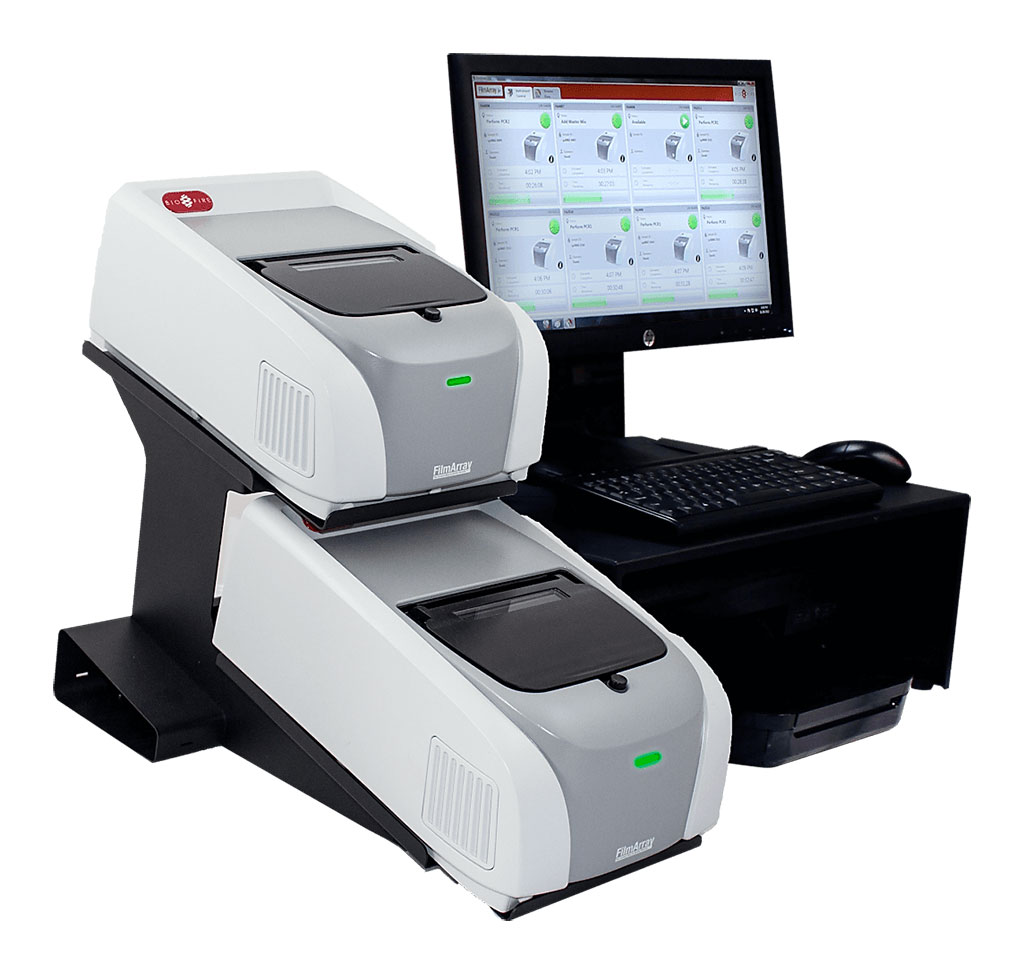Pneumonia Panel Evaluated for Lower Respiratory Tract Infection
By LabMedica International staff writers
Posted on 08 Jul 2020
Lower respiratory tract infections (LRTI) are clinical conditions that arise throughout the population. Community-acquired pneumonia is estimated to be the most common cause of infectious disease-related mortality in the USA and globally and is a leading cause of hospital and emergency room visits.Posted on 08 Jul 2020
Bacteria and viruses are the most common etiologies of lower respiratory tract infections. Patients with viral pneumonia may be managed differently than those with bacterial infections, but due to similarities in clinical presentation and symptomatology, it is not possible to distinguish viral from bacterial infections without the aid of laboratory diagnostic testing.

Image: The BioFire FilmArray Pneumonia plus Panel enables rapid and accurate automated testing for 27 bacteria and viruses that cause pneumonia and other lower respiratory tract infections (LRTI), as well as for seven genetic markers of antibiotic resistance (Photo courtesy of BioFire Diagnostics).
A large team of scientists collaborating with the University of Nebraska Medical Center (Omaha, NE, USA) assessed the performance of the BioFire FilmArray Pneumonia Panel (PN panel) and Pneumonia Plus Panel (PNplus panel) (BioFire Diagnostics, Salt Lake City, UT, USA). The panels are FDA-cleared sample-to-answer assay that enables the detection of viruses, atypical bacteria, bacteria, and antimicrobial resistance marker genes from lower respiratory tract specimens (sputum and bronchoalveolar lavage [BAL] fluid). The team prospectively collected respiratory specimens (846 BAL and 836 sputum specimens) evaluated with the PN panel were also tested by quantitative reference culture and molecular methods for comparison.
The investigators reported that the PN panel detected at least one analyte in 413 of 846 BAL specimens and in 602 of 836 sputum specimens for an overall positivity rate of 48.8% and 72.0%, respectively. Co-detections were observed in 37.8% (156/413) of BAL specimens and 56.5% (340/836) of sputum specimens. The most commonly detected analytes were Staphylococcus aureus, Pseudomonas aeruginosa, Haemophilus influenzae, and human rhinovirus/enterovirus (HRV/EV), which were found in 320 (19%), 234 (13.9%), 189 (11.2%), and 176 (10.5%) specimens, respectively.
The PN panel showed a sensitivity of 100% for 15/22 etiologic targets using BAL specimens and for 10/24 using sputum specimens. All other targets had sensitivities of ≥75% or were unable to be calculated due to low prevalence in the study population. Specificity for all targets was ≥87.2%, with many false-positive results compared to culture that were confirmed by alternative molecular methods.
The authors concluded that appropriate adoption of this test could provide actionable diagnostic information that is anticipated to impact patient care and antimicrobial stewardship decisions. The study was published on June 24, 2020 in the Journal of Clinical Microbiology.




 assay.jpg)








